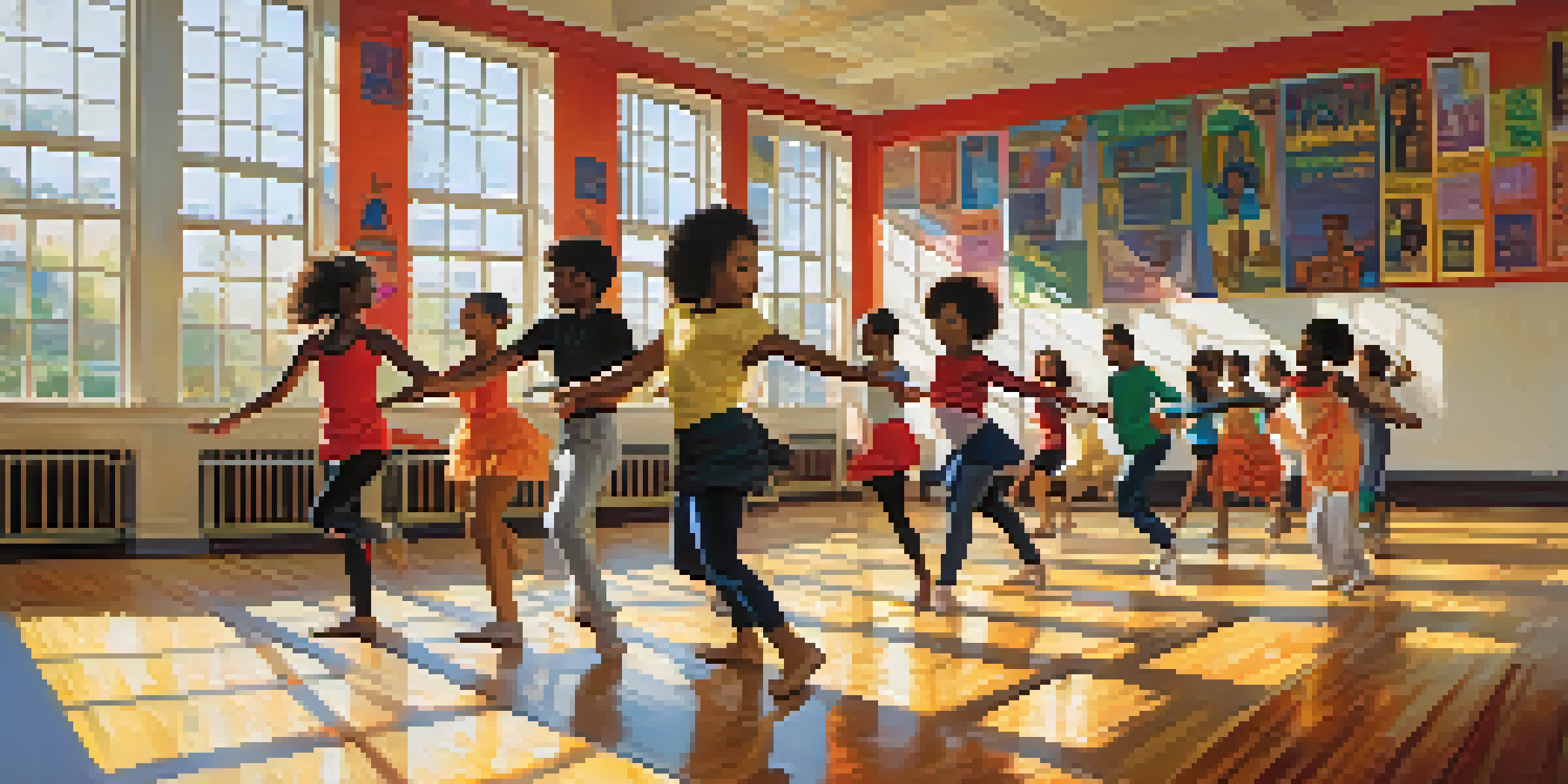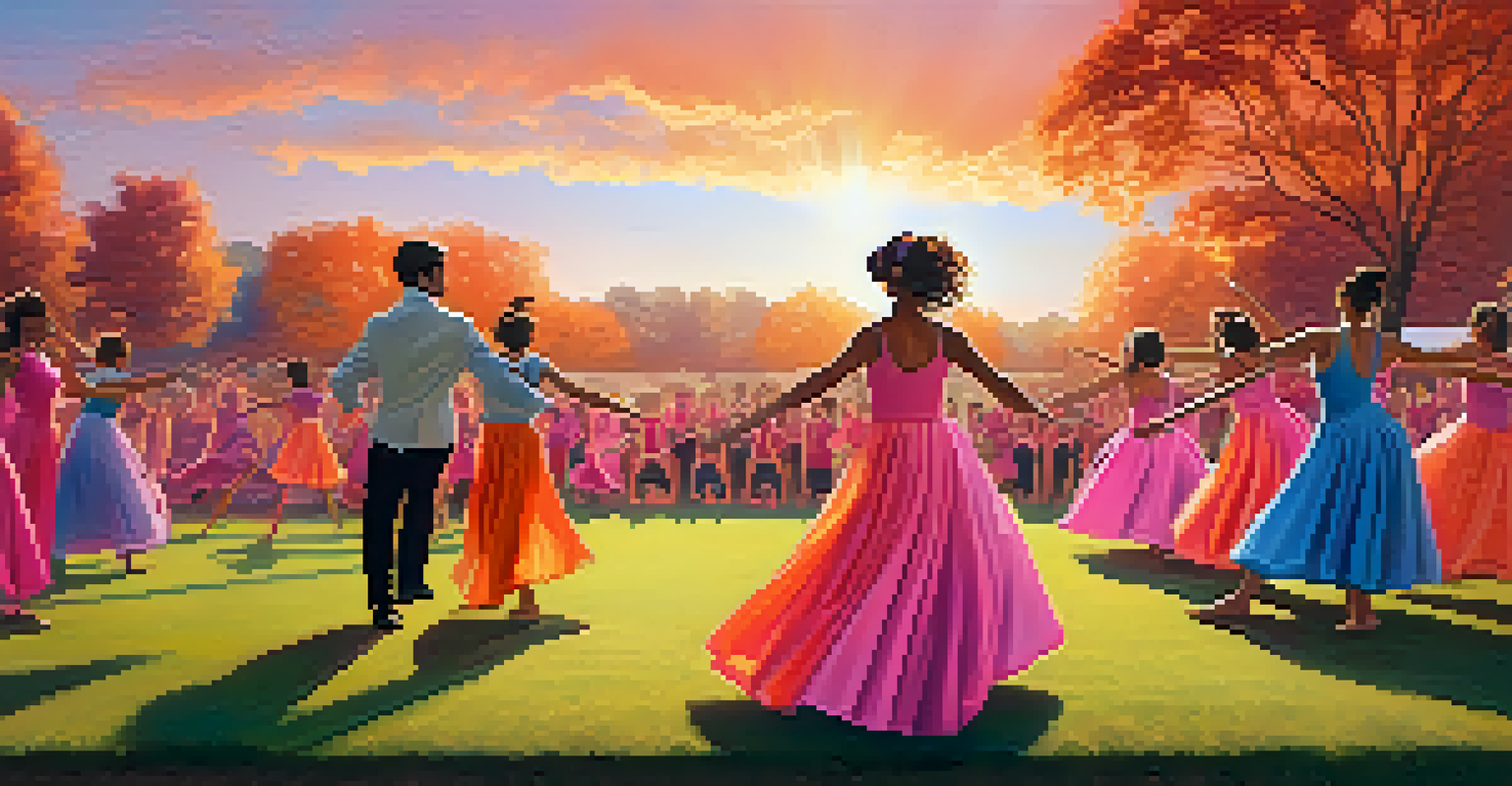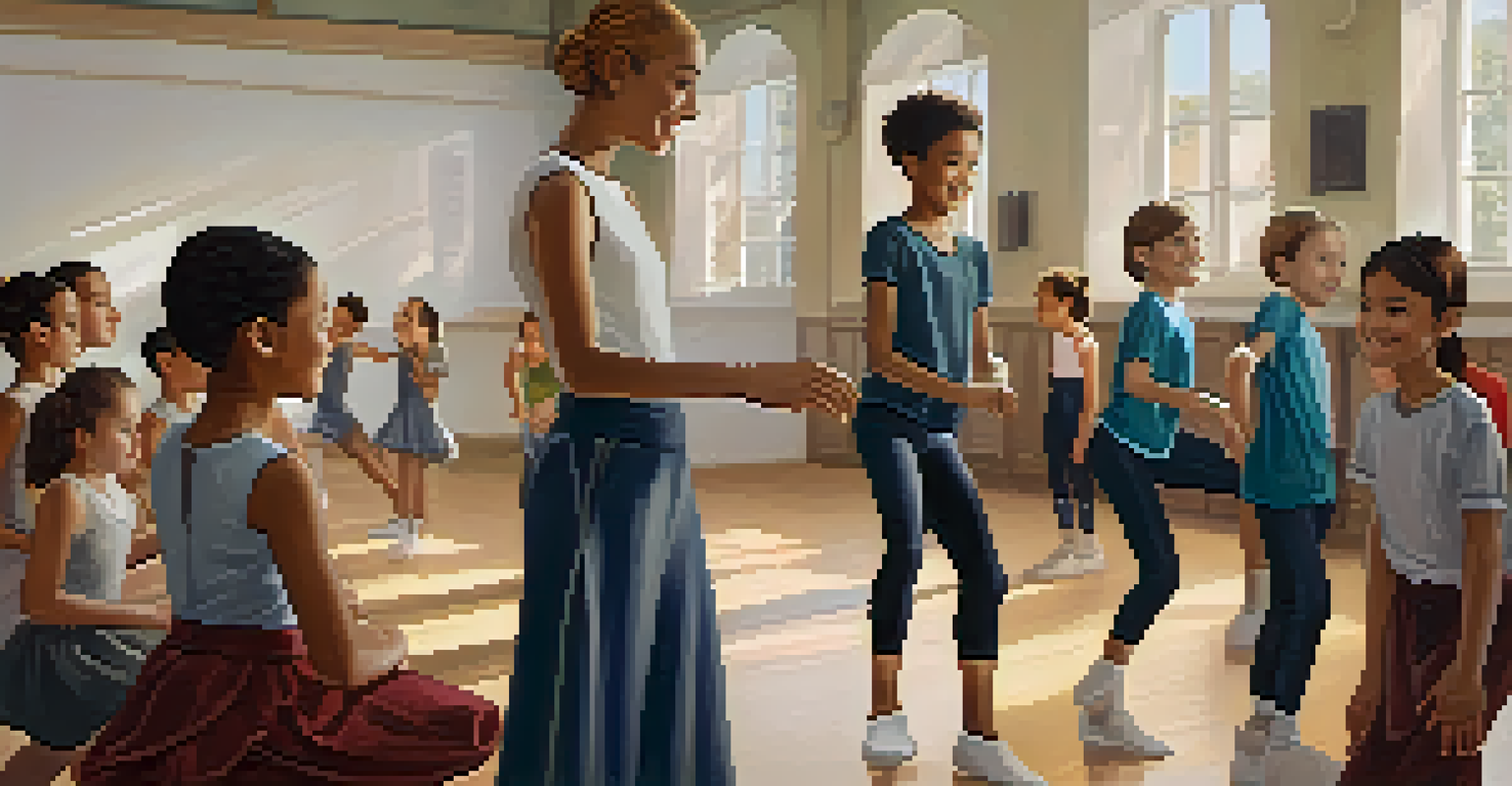Dance Curriculum: Aligning with Educational Standards

Understanding Educational Standards in Dance Education
Educational standards serve as a framework guiding what students should learn. In dance education, these standards ensure students gain the necessary skills and knowledge to thrive. Understanding these benchmarks is essential for educators to create effective dance curricula that align with broader educational goals.
Education is not the filling of a pail, but the lighting of a fire.
For instance, the National Core Arts Standards outline key competencies in dance, such as creating, performing, and responding to dance. By integrating these standards, educators can provide a structured learning environment that fosters creativity while meeting academic expectations. This approach not only enhances student learning but also elevates the status of dance as a vital art form.
Aligning dance curriculum with educational standards helps in ensuring that students are not only artists but also critical thinkers. It encourages them to analyze, interpret, and reflect on their work, promoting a deeper appreciation for dance as an art form. In doing so, dance education becomes a holistic experience that nurtures both artistic expression and academic growth.
The Benefits of a Well-Structured Dance Curriculum
A well-structured dance curriculum provides numerous benefits for students, including skill development, discipline, and teamwork. When students follow a curriculum aligned with educational standards, they learn progressively, building on skills in a logical manner. This structured approach allows students to see their growth over time, fostering motivation and confidence.

Additionally, a clear curriculum helps educators assess student progress effectively. By setting specific objectives tied to educational standards, teachers can evaluate whether students are meeting goals and identify areas for improvement. This feedback loop is crucial not only for student success but also for refining the curriculum itself.
Importance of Educational Standards
Educational standards provide a framework that helps dance educators create effective curricula that align with broader educational goals.
Moreover, a strong dance curriculum can promote inclusivity and accessibility, encouraging participation from diverse student backgrounds. By recognizing varying skill levels and incorporating a range of styles, educators can create an environment where all students feel valued and empowered. This sense of belonging can enhance their learning experience, making dance a joyful and enriching activity.
Integrating Creativity Within Educational Standards
One of the challenges of aligning dance curriculum with educational standards is maintaining creativity. While standards provide a roadmap, they shouldn't stifle artistic expression. Instead, educators should view standards as guidelines that can inspire innovative teaching methods and creative exploration.
Creativity takes courage.
For example, teachers can encourage students to express their interpretations of a specific theme while still covering the required techniques and skills. This balance allows for personal expression while adhering to educational benchmarks, making learning more engaging and relevant. It’s like building a house; the standards are the foundation, but the creativity adds the unique architectural features.
Encouraging creative thinking within the curriculum not only enhances students' artistic skills but also prepares them for real-world challenges. In an ever-evolving job market, the ability to think outside the box and adapt is invaluable. Thus, a dance curriculum that weaves creativity into its core can produce well-rounded individuals ready to tackle various aspects of life.
Assessment Strategies for Dance Education
Assessing student performance in dance can be complex, yet it is crucial for understanding their progress. Various strategies can be employed, from formative assessments during practice sessions to summative assessments in performances. These assessments should align with educational standards to provide a clear picture of student learning.
For instance, rubrics can be an effective tool for evaluating both technique and creativity in dance. By outlining specific criteria based on educational standards, educators can offer constructive feedback that helps students improve. This method not only clarifies expectations but also encourages self-reflection among students.
Benefits of Structured Curricula
A well-structured dance curriculum promotes skill development, discipline, and inclusivity, enhancing the overall learning experience for students.
Additionally, incorporating peer assessments can foster a sense of community in the classroom. When students evaluate each other's work, they learn to articulate their thoughts and gain different perspectives on dance. This collaborative approach enriches the learning experience and aligns with the educational standard of fostering communication skills.
Professional Development for Dance Educators
To effectively implement a dance curriculum that aligns with educational standards, ongoing professional development for educators is essential. Workshops, conferences, and online courses can provide teachers with new strategies, techniques, and insights into current educational trends. This investment in professional growth ultimately benefits students.
For example, educators can learn about innovative teaching practices that promote inclusivity and engagement. By understanding diverse learning styles and adapting their approaches, teachers can create a more effective learning environment for all students. This continuous learning process is akin to an evolving dance piece, where each performance improves with practice and feedback.
Moreover, networking with fellow dance educators can lead to the sharing of resources and ideas. Collaboration fosters a sense of community and encourages educators to support one another in navigating challenges. When teachers feel empowered and connected, they can more effectively inspire their students to flourish in dance.
Engaging the Community in Dance Education
Engaging the local community in dance education can significantly enhance the curriculum's impact. When schools collaborate with local dance companies, theaters, and artists, students gain exposure to a broader spectrum of dance styles and experiences. This relationship enriches the educational experience while fostering community support for the arts.
For instance, organizing community performances allows students to showcase their talents and hard work. These events not only boost students' confidence but also encourage community members to appreciate and participate in the arts. It's a win-win situation, as students gain valuable experience while the community gets to witness their growth and creativity.
Future of Dance Education
The future of dance curricula will emphasize flexibility and technology, fostering innovation while inspiring a lifelong passion for dance.
Furthermore, community engagement can provide additional resources and funding for dance programs. When local businesses and organizations see the value of dance education, they may be more inclined to support it financially or through partnerships. This support can be crucial in maintaining and enhancing the quality of dance education in schools.
The Future of Dance Curriculum and Educational Standards
As education continues to evolve, so too must dance curricula. The future will likely see an increased emphasis on flexibility within educational standards, allowing for more personalized learning experiences. This adaptability can foster innovation, encouraging educators to experiment with new ideas and methods that resonate with today's students.
Technology will also play a significant role in shaping the future of dance education. Online platforms and digital resources can complement traditional teaching methods, providing students with access to diverse learning materials. Imagine students being able to learn from renowned choreographers via online classes; the possibilities are endless.

Ultimately, the goal is to create a dance curriculum that not only aligns with educational standards but also inspires a lifelong passion for dance. By focusing on both skill development and creative expression, educators can nurture the next generation of dancers who are not only talented but also well-rounded individuals. This holistic approach will ensure that dance remains a vibrant part of education for years to come.